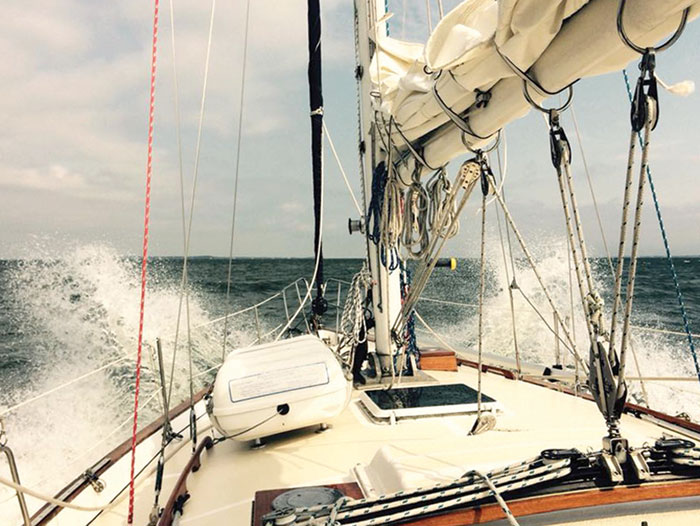When you’re seasick, you’ll try anything...

Before we set out for our six-month sailing sabbatical, one of the most important items I’d provisioned was a 1000-count bucket of meclizine (also known as Bonine, Dramamine II, Antivert), the remedy I’d finally found which kept seasickness at bay, while allowing me to remain conscious and enjoy alcoholic beverages. Until I found what worked for me, I could not so much as walk on a floating dock, much less spend time on a boat, without getting nauseated. Motion sickness also dogged me in cars; I was a terrible navigator, unable to read a map without getting sick.
When it became apparent that this sailing experiment was going to become an important feature of my leisure life, at least if I wanted to spend some of it with my husband, finding a motion sickness remedy became an imperative. There was a lot of trial, and even more error, as I tried everything. Regular Dramamine knocked me senseless. Scopolamine patches left me fuzzy and came with the inconvenience of requiring a prescription. Ginger in its many forms—including capsules which had a very strong taste when they came back up—was feeble. Wristbands were a joke. And behavioral techniques, such as watching the horizon and taking the helm, just didn’t cut it. Worst of all, any hope of avoiding seasickness required planning ahead and applying the remedy well before actually sailing.
So, when I happened upon meclizine, I was delighted. I adopted a habit of simply taking a pill every morning that I thought I might find myself in a motion sickness-inducing situation. Going below while underway was no longer fraught with peril. While I wasn’t quite bulletproof, I was a lot more comfortable than I ever imagined I could be, all without side effects. Hence, the bucket of pills stowed in the galley as we started our way south.
Yet, serendipitously, just a couple of weeks before departure, I’d read on SpinSheet’s website of a seasickness remedy that was new to me: placing an earplug in your non-dominant ear (i.e. left ear if you are righthanded), which was supposed to work not only to prevent sickness, but also once it had started. Figuring, at worst, that all it would cost me was a single day of seasickness, I decided to try it out on my very first day as a cruiser. Miraculously, under conditions that would normally have been trying (bouncing around at anchor, heavy rains), the earplug worked perfectly. As I became more confident in its efficacy, I wore the earplug less often, until I graduated to not needing it at all. Occasionally, when a bit of nausea washed over me, I could place a finger in my left ear and take a few deep breaths, and the feeling would pass.
I don’t know whether the earplug somehow disrupts my hypersensitive inner ear, or whether it’s a potent placebo; I don’t question the result. Since that momentous day, I’ve taken maybe a handful of prophylactic meclizine pills in anticipation of a rough passage. With those few exceptions, nearly five years have passed since I’ve needed to deal with seasickness (though I’m probably jinxing myself by writing this).
Unfortunately, there is no panacea. What works for one person may not work for another. While the chemical-free earplug remedy has been an epiphany for me, it may be totally ineffectual for someone else. While Dramamine was more effective than any sleeping pill for me, it may be someone else’s miracle. Trial and error seems to be the only method to find personal relief (though if you tend to get motion sick in a car, you can test remedies by riding shotgun and trying to read, allowing you to get off the ride if it becomes too unpleasant).
Meanwhile, my bucket of pills molders in Calypso’s galley.
By Eva Hill




